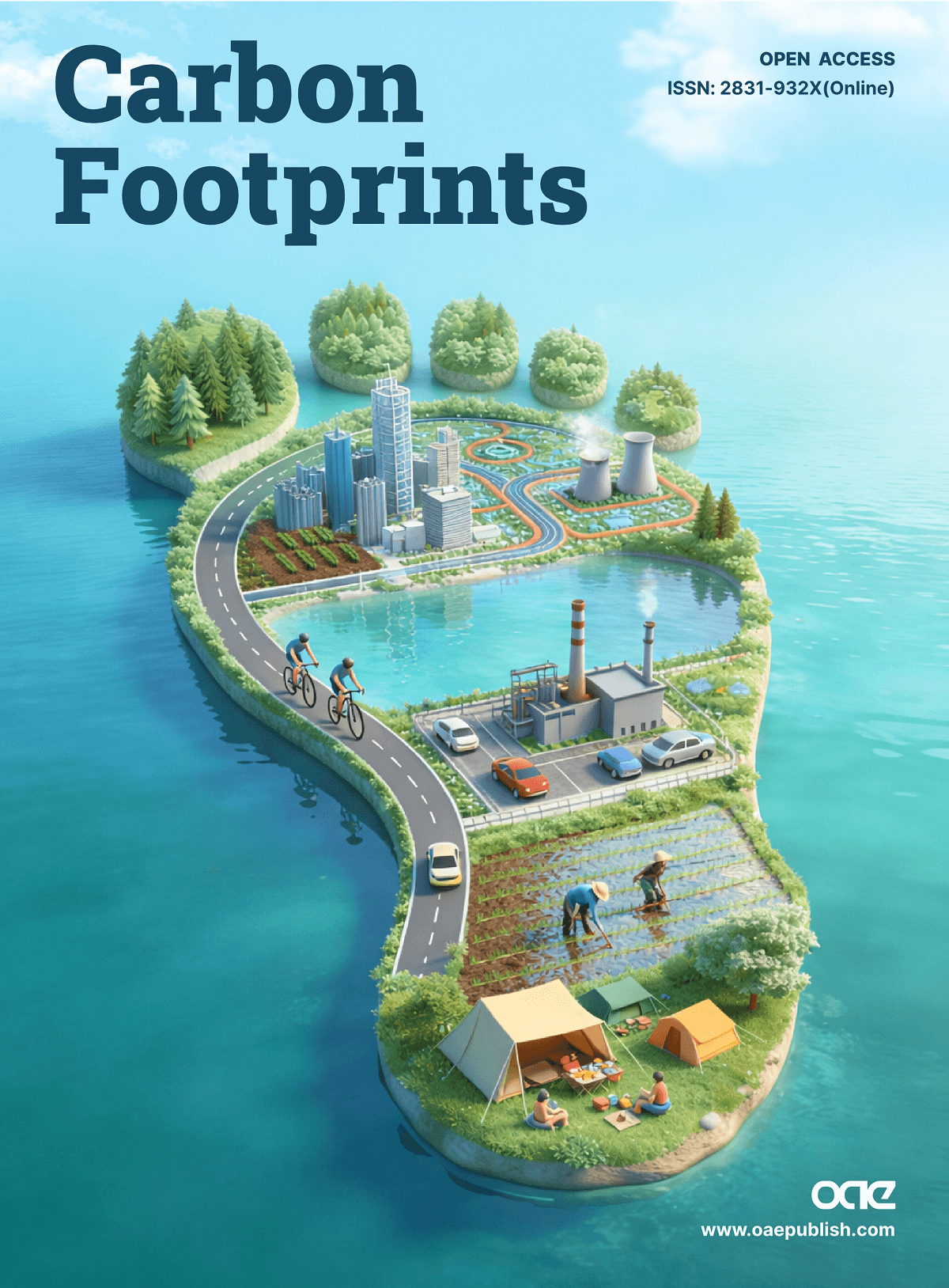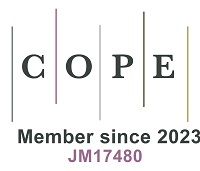REFERENCES
2. Epa U, Change Division C. Inventory of U.S. greenhouse gas emissions and sinks: 1990-2020. Available from: https://www.epa.gov/ghgemissions/inventory-us-greenhouse-gas-emissions-and-sinks [Last accessed on 8 Dec 2022].
3. Crippa M, Solazzo E, Guizzardi D, Monforti-ferrario F, Tubiello FN, Leip A. Food systems are responsible for a third of global anthropogenic GHG emissions. Nat Food 2021;2:198-209.
4. USDA-NASS. Census of Agriculture. 2017. Available from: https://nass.usda.gov/AgCensus/ [Last accessed on 8 Dec 2022].
5. USDA-NASS. Census of Agriculture. 2012. Available from: https://nass.usda.gov/AgCensus/ [Last accessed on 8 Dec 2022].
6. Janssen PH. Influence of hydrogen on rumen methane formation and fermentation balances through microbial growth kinetics and fermentation thermodynamics. Anim Feed Sci Technol 2010;160:1-22.
7. Rotz CA, Asem-hiablie S, Place S, Thoma G. Environmental footprints of beef cattle production in the United States. Agric Syst 2019;169:1-13.
8. Saggar S, Tate KR, Giltrap DL, Singh J. Soil-atmosphere exchange of nitrous oxide and methane in New Zealand terrestrial ecosystems and their mitigation options: a review. Plant Soil 2008;309:25-42.
9. Raposo E, Brito LF, Janusckiewicz ER, et al. Greenhouse gases emissions from tropical grasslands affected by nitrogen fertilizer management. Agron J 2020;112:4666-80.
10. Alemu AW, Amiro BD, Bittman S, Macdonald D, Ominski KH. Greenhouse gas emission of Canadian cow-calf operations: A whole-farm assessment of 295 farms. Agric Syst 2017;151:73-83.
11. Angst G, Mueller KE, Nierop KG, Simpson MJ. Plant- or microbial-derived? Soil Biol Biochem 2021;156:108189.
12. Dubeux Jr JCB, Santos HQ, Sollenberger LE. Nutrient cycling: perspectives of improving sustainability of intensively managed pastures. Fertilidade Do Solo Para Pastagens Produtivas. Piracicaba, Sao Paulo: Luiz de Queiroz Agricultural Foundation; 2004. pp. 357-400.
13. Dubeux JCB, Sollenberger LE, Mathews BW, Scholberg JM, Santos HQ. Nutrient Cycling in Warm-Climate Grasslands. Crop Sci 2007;47:915-28.
14. Dubeux JCB, Sollenberger LE, Interrante SM, Vendramini JMB, Stewart RL. Litter decomposition and mineralization in bahiagrass pastures managed at different intensities. Crop Sci 2006;46:1305-10.
15. Haynes R, Williams P. Nutrient cycling and soil fertility in the grazed pasture ecosystem; 1993.
16. Dubeux JC, Sollenberger LE. Nutrient cycling in grazed pastures. In Management strategies for sustainable cattle production in southern pastures. Amsterdam: Elsevier; 2020. pp. 59-75.
17. Hristov AN, Oh J, Firkins JL, et al. Special topics-mitigation of methane and nitrous oxide emissions from animal operations: I. A review of enteric methane mitigation options. J Anim Sci 2013;91:5045-69.
18. Cardoso AS, Berndt A, Leytem A, et al. Impact of the intensification of beef production in Brazil on greenhouse gas emissions and land use. Agric Syst 2016;143:86-96.
19. Yu L, Huang Y, Zhang W, Li T, Sun W. Methane uptake in global forest and grassland soils from 1981 to 2010. Sci Total Environ 2017;607-608:1163-72.
20. Samuelson LJ, Stokes TA, Butnor JR, et al. Ecosystem carbon density and allocation across a chronosequence of longleaf pine forests. Ecol Appl 2017;27:244-59.
21. Bracho R, Starr G, Gholz HL, Martin TA, Cropper WP, Loescher HW. Controls on carbon dynamics by ecosystem structure and climate for southeastern U.S. slash pine plantations. Ecol Monogr 2012;82:101-28.
22. Vogel JG, Bracho R, Akers M, et al. Regional assessment of carbon pool response to intensive silvicultural practices in loblolly pine plantations. Forests 2022;13:36.
23. Bracho R, Silveira ML, Boughton R, et al. Carbon dynamics and soil greenhouse fluxes in a Florida’s native rangeland before and after fire. Agric For Meteorol 2021;311:108682.
24. Xu S, Silveira ML, Inglett KS, Sollenberger LE, Gerber S. Effect of land-use conversion on ecosystem C stock and distribution in subtropical grazing lands. Plant Soil 2016;399:233-45.
25. Poeplau C, Don A. Carbon sequestration in agricultural soils via cultivation of cover crops - A meta-analysis. Agric Ecosyst Environ 2015;200:33-41.
26. Jian J, Du X, Reiter MS, Stewart RD. A meta-analysis of global cropland soil carbon changes due to cover cropping. Soil Biol Biochem 2020;143:107735.
27. Rowntree JE, Stanley PL, Maciel ICF, et al. Ecosystem impacts and productive capacity of a multi-species pastured livestock system. Front Sustain Food Syst 2020;4:544984.
28. Villa JA, Mitsch WJ. Carbon sequestration in different wetland plant communities in the Big Cypress Swamp region of southwest Florida. Int J Biodivers Sci Ecosyst Serv Manag 2015;11:17-28.
29. Xiong X, Grunwald S, Myers DB, Ross CW, Harris WG, Comerford NB. Interaction effects of climate and land use/land cover change on soil organic carbon sequestration. Sci Total Environ 2014;493:974-82.
30. Gomez-casanovas N, Delucia NJ, Delucia EH, et al. Seasonal controls of CO2 and CH4 dynamics in a temporarily flooded subtropical wetland. J Geophys Res Biogeosci 2020:125.
31. Ghosh PK, Mahanta SK. Carbon sequestration in grassland systems. Range Manag Agrofor 2014;35:173-81. Available from: https://publications.rmsi.in/index.php/rma/article/view/382 [Last accessed on 8 Dec 2022]
32. Adewopo J, Silveira M, Xu S, Gerber S, Sollenberger L, Martin T. Management intensification impacts on soil and ecosystem carbon stocks in subtropical grasslands. Soil Sci Soc Am J 2014;78:977-86.
33. Henry DD, Ciriaco FM, Araujo RC, et al. Effects of bismuth subsalicylate and encapsulated calcium-ammonium nitrate on enteric methane production, nutrient digestibility, and liver mineral concentration of beef cattle. J Anim Sci 2020:98.
34. Patra AK. The effect of dietary fats on methane emissions, and its other effects on digestibility, rumen fermentation and lactation performance in cattle: a meta-analysis. Livest Sci 2013;155:244-54.
35. Belanche A, Newbold CJ, Morgavi DP, Bach A, Zweifel B, Yáñez-Ruiz DR. A meta-analysis describing the effects of the essential oils blend agolin ruminant on performance, rumen fermentation and methane emissions in dairy cows. Animals 2020;10:620.
36. Jayanegara A, Leiber F, Kreuzer M. Meta-analysis of the relationship between dietary tannin level and methane formation in ruminants from in vivo and in vitro experiments. J Anim Physiol Anim Nutr 2012;96:365-75.
37. Franzluebbers AJ. Cattle grazing effects on the environment: greenhouse gas emissions and carbon footprint. In Management strategies for sustainable cattle production in southern pastures. Amsterdam: Elsevier; 2019. pp. 11-34.
38. Desjardins R, Worth D, Vergé X, Maxime D, Dyer J, Cerkowniak D. Carbon footprint of beef cattle. Sustainability 2012;4:3279-301.
39. Klopatek SC, Marvinney E, Duarte T, Kendall A, Yang XC, Oltjen JW. Grass-fed
40. Beauchemin K, Janzen H, Little S, Mcallister T, Mcginn S. Mitigation of greenhouse gas emissions from beef production in western Canada - evaluation using farm-based life cycle assessment. Anim Feed Sci Technol 2011;166-167:663-77.
41. Rosenbaum KL, Schoene D, Mekouar A. Climate change and the forest sector. Possible national and subnational legislation. 2004. Available from: https://www.fao.org/documents/card/en/c/287cbda2-a217-4ca4-8aca-a9b8dc29e757/ [Last accessed on 8 Dec 2022].
42. Nielsen AS, Plantinga AJ, Alig RJ. Mitigating climate change through afforestation: New cost estimates for the United States. Resour Energy Econ 2014;36:83-98.
43. Torres CME, Kohmann MM, Fraisse CW. Quantification of greenhouse gas emissions for carbon neutral farming in the Southeastern USA. Agric Syst 2015;137:64-75.
44. Richards KR, Stokes C. A review of forest carbon sequestration cost studies: a dozen years of research. Clim Chang 2004;63:1-48.
45. Duffy C, O’Donoghue C, Ryan M, Styles D, Spillane C. Afforestation: replacing livestock emissions with carbon sequestration. J Environ Manag 2020;264:110523.
46. McCarl BA, Schneider UA. Climate change. greenhouse gas mitigation in U.S. agriculture and forestry. Science 2001;294:2481-2.
47. Lewandrowski J, Kim C, Aillery M. Carbon sequestration through afforestation under uncertainty. For Policy Econ 2014;38:90-6.
48. Nilsson S, Schopfhauser W. The carbon-sequestration potential of a global afforestation program. Clim Chang 1995;30:267-93.
49. Mazzetto AM, Bishop G, Styles D, Arndt C, Brook R, Chadwick D. Comparing the environmental efficiency of milk and beef production through life cycle assessment of interconnected cattle systems. J Clean Prod 2020;277:124108.
50. Mishurov M, Kiely G. Nitrous oxide flux dynamics of grassland undergoing afforestation. Agric Ecosyst Environ 2010;139:59-65.
51. Bren d’Amour C, Reitsma F, Baiocchi G, et al. Future urban land expansion and implications for global croplands. Proc Natl Acad Sci USA 2017;114:8939-44.
52. Zhang C, Tian H, Pan S, et al. Effects of forest regrowth and urbanization on ecosystem carbon storage in a rural–urban gradient in the Southeastern United States. Ecosystems 2008;11:1211-22.
53. Harveson PM, Lopez RR, Collier BA, Silvy NJ. Impacts of urbanization on Florida key deer behavior and population dynamics. Biol Conserv 2007;134:321-31.
54. Boggs JL, Sun G. Urbanization alters watershed hydrology in the piedmont of North Carolina. Ecohydrology 2011;4:256-64.
55. Ruhl JB. Water wars, eastern style: divvying up the apalachicola-chattahoochee-flint river basin. J Contemp Water Res Edu 2005;131:47-54. Available from: http://ssrn.com/abstract=1357762 [Last accessed on 8 Dec 2022]
56. Franzluebbers AJ. Achieving soil organic carbon sequestration with conservation agric syst in the Southeastern United States. Soil Sci Soc Am J 2010;74:347-57.
57. Mcbride WD, Mathews K. United States department of agriculture the diverse structure and organization of U.S. beef cow-calf farms. 2011. Available from: www.ers.usda.gov [Last accessed on 8 Dec 2022].
58. Causarano HJ, Franzluebbers AJ, Reeves DW, Shaw JN. Soil organic carbon sequestration in cotton production systems of the Southeastern United States: a review. J Environ Qual 2006;35:1374-83.
59. Rotz CA, Asem-Hiablie S, Dillon J, Bonifacio H. Cradle-to-farm gate environmental footprints of beef cattle production in Kansas, Oklahoma, and Texas. J Anim Sci 2015;93:2509-19.
60. Bergtold JS, Sailus M, Jackson T. Conservation tillage systems in the southeast: production, profitability and stewardship. Washington DC: USDA; 2020. pp. 19-25. Available from: https://www.sare.org/resources/conservation-tillage-systems-in-the-southeast/ [Last accessed on 8 Dec 2022].
61. Baxter LL, West CP, Brown CP, Green PE. Stocker beef production on low-water-input systems in response to legume inclusion: I. forage and animal responses. Crop Sci 2017;57:2294-302.
62. Santos ERS, Dubeux JCB, Mackowiak C, et al. Sward responses of bahiagrass cultivars under no nitrogen fertilization. Crop Sci 2019;59:2893-902.
63. Jaramillo DM, Dubeux JC, Sollenberger LE, et al. Water footprint, herbage, and livestock responses for nitrogen-fertilized grass and grass-legume grazing systems. Crop Sci 2021;61:3844-58.
64. Rochette P, Janzen HH. Towards a revised coefficient for estimating N2O emissions from legumes. Nutr Cycl Agroecosyst 2005;73:171-9.
65. Virkajärvi P, Maljanen M, Saarijärvi K, Haapala J, Martikainen PJ. N2O emissions from boreal grass and grass - clover pasture soils. Agric Ecosyst Environ 2010;137:59-67.
66. Daryanto S, Fu B, Wang L, Jacinthe P, Zhao W. Quantitative synthesis on the ecosystem services of cover crops. Earth Sci Rev 2018;185:357-73.
67. Nunes MR, van Es HM, Schindelbeck R, Ristow AJ, Ryan M. No-till and cropping system diversification improve soil health and crop yield. Geoderma 2018;328:30-43.
68. Mahboubi AA, Lal R, Faussey NR. Twenty-eight years of tillage effects on two soils in ohio. Soil Sci Soc Am J 1993;57:506-12.
69. Liu S, Wang JJ, Tian Z, Wang X, Harrison S. Ammonia and greenhouse gas emissions from a subtropical wheat field under different nitrogen fertilization strategies. J Environ Sci 2017;57:196-210.
70. Connell JA, Hancock DW, Durham RG, Cabrera ML, Harris GH. Comparison of enhanced-efficiency nitrogen fertilizers for reducing ammonia loss and improving bermudagrass forage production. Crop Sci 2011;51:2237-48.
71. Capper JL. Is the grass always greener? Comparing the environmental impact of conventional, natural and grass-fed beef production systems. Animals 2012;2:127-43.
72. Pelletier N, Pirog R, Rasmussen R. Comparative life cycle environmental impacts of three beef production strategies in the Upper Midwestern United States. Agric Syst 2010;103:380-9.
73. USDA. Livestock, poultry and grain market news. 2022. Available from: https://www.ams.usda.gov/market-news/livestock-poultry-and-grain-other-reports [Last accessed on 8 Dec 2022].
74. Bhandari BD, Gillespie J, Scaglia G, Wang J, Salassi M. Analysis of pasture systems to maximize the profitability and sustainability of grass-fed beef production. J Agric Appl Econ 2015;47:193-212.
75. Asem-hiablie S, Rotz CA, Stout R, Place S. Management characteristics of beef cattle production in the eastern United States. Prof Anim Sci 2018;34:311-25.
76. Rouquette M, Aiken GE. Introduction: management strategies for sustainable cattle production in Southern Pastures. In Management strategies for sustainable cattle production in southern pastures. Amsterdam: Elsevier; 2020. pp. 1-10.
77. Archimède H, Eugène M, Marie Magdeleine C, et al. Comparison of methane production between C3 and C4 grasses and legumes. Anim Feed Sci Technol 2011;166-167:59-64.
78. Garcia-Jimenez LM. Ecosystem services provided by contrasting grazing systems in North Florida. Ph.D Dissertation. Gainesville, FL: University of Florida; 2019.
79. DeRamus HA, Clement TC, Giampola DD, Dickison PC. Methane emissions of beef cattle on forages: efficiency of grazing management systems. J Environ Qual 2003;32:269-77.
80. Thompson L, Rowntree J. Invited Review: Methane sources, quantification, and mitigation in grazing beef systems. Appl Anim Sci 2020;36:556-73.
81. Stackhouse KR, Rotz CA, Oltjen JW, Mitloehner FM. Growth-promoting technologies decrease the carbon footprint, ammonia emissions, and costs of California beef production systems. J Anim Sci 2012;90:4656-65.
82. Moriel P, Cooke RF, Bohnert DW, Vendramini JMB, Arthington JD. Effects of energy supplementation frequency and forage quality on performance, reproductive, and physiological responses of replacement beef heifers 1; 2012.
83. Scaglia G. Supplementation of growing beef heifers with starch or highly digestible fiber supplements. J Agric Sci 2020;12:14.
84. Alvarez-Hess PS, Williams SRO, Jacobs JL, et al. Effect of dietary fat supplementation on methane emissions from dairy cows fed wheat or corn. J Dairy Sci 2019;102:2714-23.
85. Arthington JD, Kalmbacher RS. Effect of early weaning on the performance of three-year-old, first-calf beef heifers and calves reared in the subtropics. In J Anim Sci 2003;81. Available from: https://academic.oup.com/jas/article/81/5/1136/4789994 [Last accessed on 8 Dec 2022]
86. Rae D, Kunkle W, Chenoweth P, Sand R, Tran T. Relationship of parity and body condition score to pregnancy rates in Florida beef cattle. Theriogenology 1993;39:1143-52.
87. Derouen SM, Franke DE. Effects of sire breed, breed type and age and weight at breeding on calving rate and date in beef heifers first exposed at three ages. 1989. Available from: https://academic.oup.com/jas/article-abstract/67/5/1128/4705051 [Last accessed on 8 Dec 2022].
88. Arthington JD, Spears JW, Miller DC. The effect of early weaning on feedlot performance and measures of stress in beef calves 1,2. 2005. Available from: https://academic.oup.com/jas/article/83/4/933/4790800 [Last accessed on 8 Dec 2022].
89. Houghton PL, Lemenager RP, Horstman A, Hendrix KS, Moss GE. Effects of body composition, pre-and postpartum energy level, and early weaning on reproductive performance of beef cows and preweaning calf gain. 1990. Available from: https://academic.oup.com/jas/article-abstract/68/5/1438/4705735 [Last accessed on 8 Dec 2022].
90. Lamb GC, Dahlen CR, Larson JE, Marquezini G, Stevenson JS. Control of the estrous cycle to improve fertility for fixed-time artificial insemination in beef cattle: a review. J Anim Sci 2010;88:E181-92.
91. Binelli M, Bittar J, Gonella A. Analysis of the USDA’s 2017 cow-calf management practices results: part 2 - breeding practices/reproductive technologies. EDIS 2021:6.
92. Beef 2017 beef cow-calf management practices in the United States. 2020. Available from: http://www.aphis.usda.gov/nahms [Last accessed on 8 Dec 2022].
93. Kenny DA, Fitzsimons C, Waters SM, McGee M. Invited review: improving feed efficiency of beef cattle - the current state of the art and future challenges. Animal 2018;12:1815-26.
94. Koch RM, Swiger LA, Chambers D, Gregory KE. Efficiency of feed use in beef cattle. J Anim Sci 1963;22:486-94.
95. Arthur PF, Archer JA, Johnston DJ, et al. Genetic and phenotypic variance and covariance components for feed intake, feed efficiency, and other postweaning traits in Angus cattle 1,2. J Anim Sci 2001;79. Available from: https://academic.oup.com/jas/article/79/11/2805/4645243 [Last accessed on 8 Dec 2022]
96. Nutrient requirements of beef cattle, 8th revised edition. Washington, DC: National Academies Press; 2015.
97. Lamb GC, Maddock T. Feed efficiency in cows. Florida beef cattle short course; 2009. pp. 35-42. Available from: https://animal.ifas.ufl.edu/beef_extension/bcsc/2009/pdf/lamb.pdf [Last accessed on 8 Dec 2022].
98. Basarab JA, Beauchemin KA, Baron VS, et al. Reducing GHG emissions through genetic improvement for feed efficiency: effects on economically important traits and enteric methane production. Animal 2013;7:303-15.
99. Freetly HC, Kuehn LA, Thallman RM, Snelling WM. Heritability and genetic correlations of feed intake, body weight gain, residual gain, and residual feed intake of beef cattle as heifers and cows. J Anim Sci 2020:98.
100. Smith PE, Waters SM, Kenny DA, Kirwan SF, Conroy S, Kelly AK. Effect of divergence in residual methane emissions on feed intake and efficiency, growth and carcass performance, and indices of rumen fermentation and methane emissions in finishing beef cattle. J Anim Sci 2021:99.








